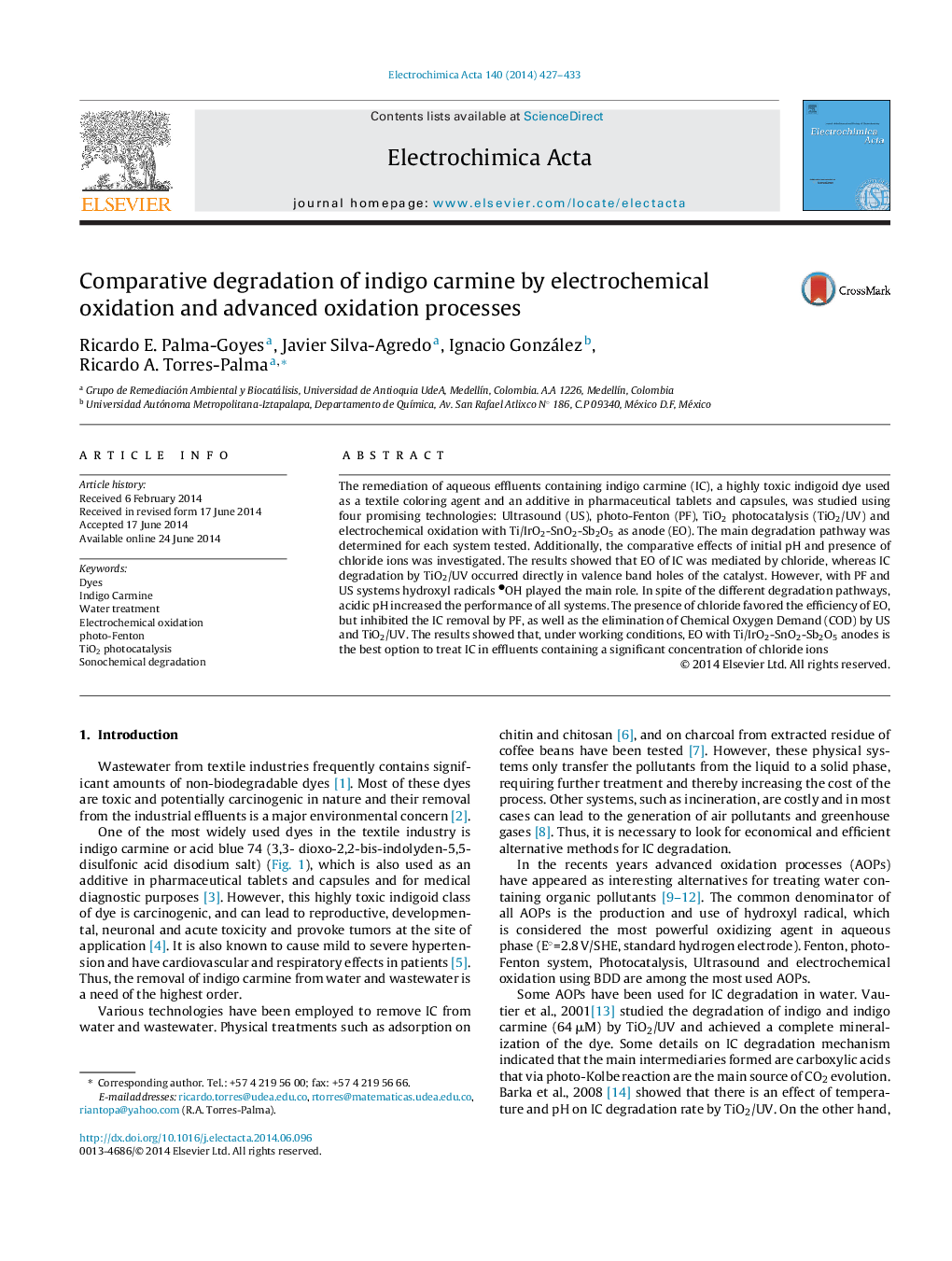| کد مقاله | کد نشریه | سال انتشار | مقاله انگلیسی | نسخه تمام متن |
|---|---|---|---|---|
| 185239 | 459592 | 2014 | 7 صفحه PDF | دانلود رایگان |
The remediation of aqueous effluents containing indigo carmine (IC), a highly toxic indigoid dye used as a textile coloring agent and an additive in pharmaceutical tablets and capsules, was studied using four promising technologies: Ultrasound (US), photo-Fenton (PF), TiO2 photocatalysis (TiO2/UV) and electrochemical oxidation with Ti/IrO2-SnO2-Sb2O5 as anode (EO). The main degradation pathway was determined for each system tested. Additionally, the comparative effects of initial pH and presence of chloride ions was investigated. The results showed that EO of IC was mediated by chloride, whereas IC degradation by TiO2/UV occurred directly in valence band holes of the catalyst. However, with PF and US systems hydroxyl radicals ●OH played the main role. In spite of the different degradation pathways, acidic pH increased the performance of all systems. The presence of chloride favored the efficiency of EO, but inhibited the IC removal by PF, as well as the elimination of Chemical Oxygen Demand (COD) by US and TiO2/UV. The results showed that, under working conditions, EO with Ti/IrO2-SnO2-Sb2O5 anodes is the best option to treat IC in effluents containing a significant concentration of chloride ions
Journal: Electrochimica Acta - Volume 140, 10 September 2014, Pages 427–433
